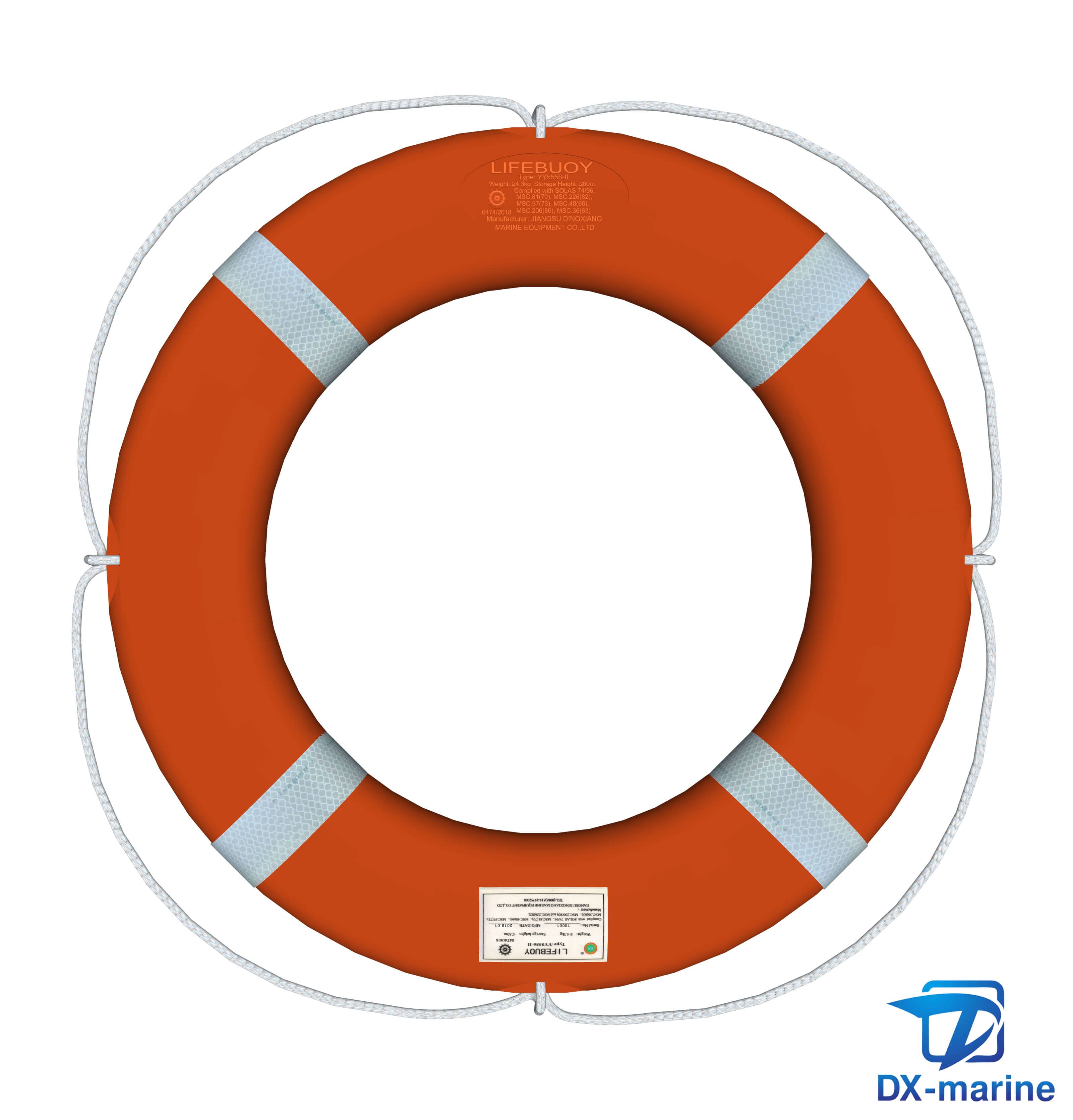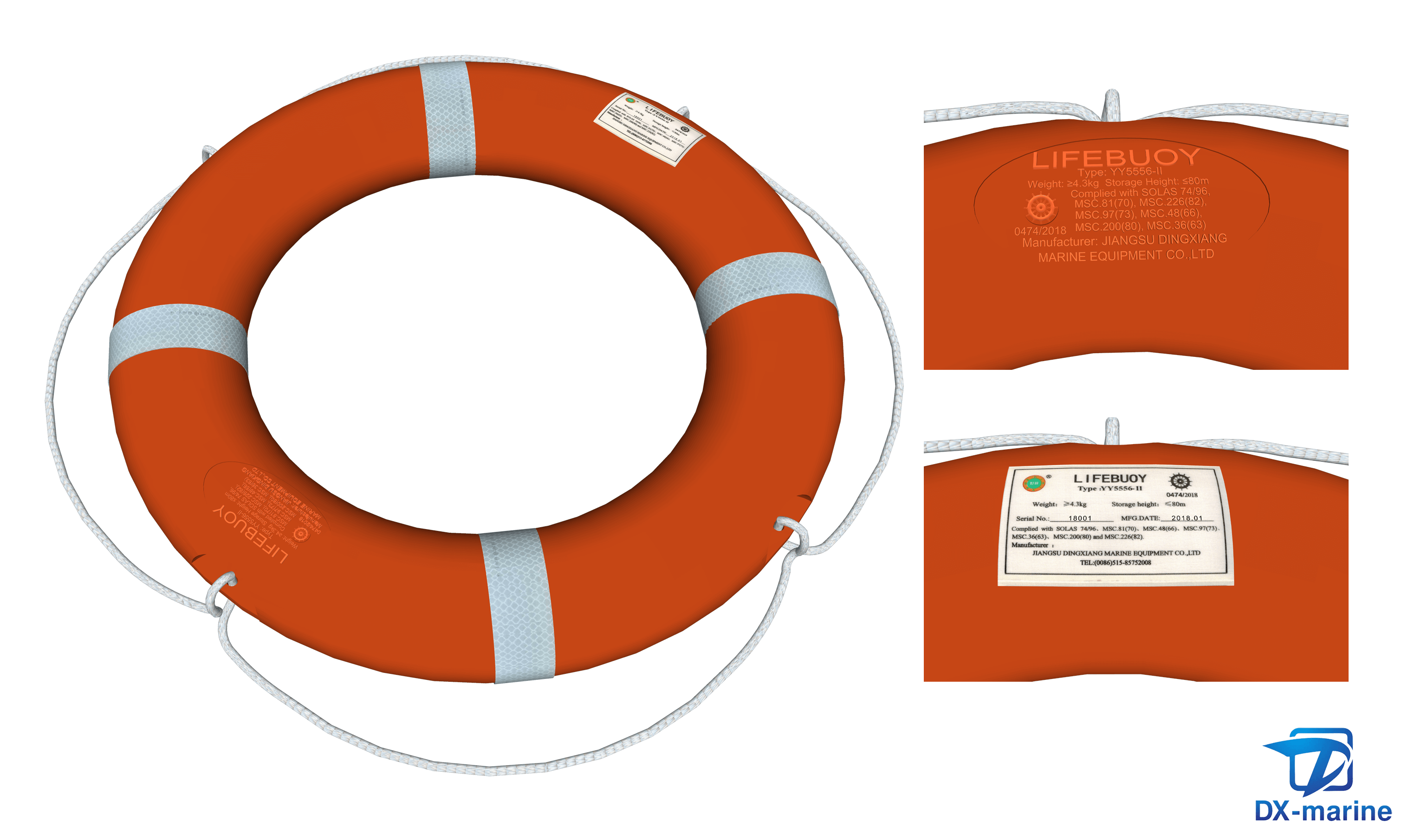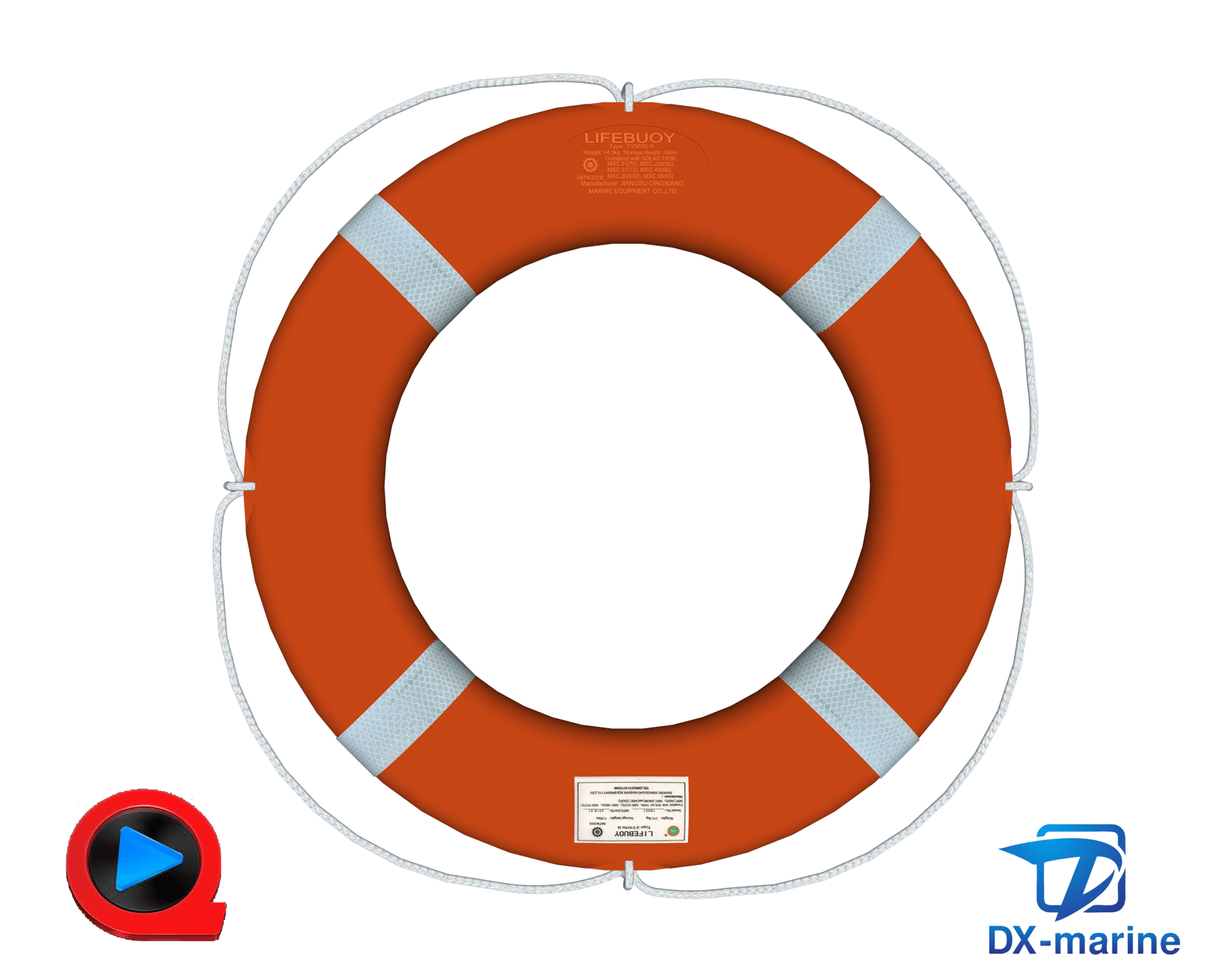
4.3kg Life buoy Ring
A、Type: YY5556-II
B、Standard
1996 Amendments of the International Convention for the Safety of Life at Sea 1974; the International Life-saving Appliance Code; Regulation for the statutory surveys of ships and offshore installation, MSC.81(70), MSC.226(82), MSC.97(73), MSC.48(66), MSC.200(80), MSC.36(63) and GB4302-2008
C、Technical parameter
Material:
Cover fabric: Polyethylene plastics
Filler material: Stiff polyurethane foam
Buoyancy: ≥ 142N
Weight: ≥4.3kg
Max.Stowage Height: 80m
Size:
-
Internal diameter: 460mm
-
External diameter: 750mm
-
Thickness: 115mm
D、Approved: CCS MED EC SOLAS
.jpg)
E、Introduction
Life buoys are to be distributed so that they are readily available on both sides of the ship and, as far as practicable, on all open decks. At least one lifebuoy must be placed near the stern of the vessel. They must not be permanently secured, but must be capable of being rapidly deployed.
The maximum permitted diameter of a lifebuoy is 800 mm, and the inner diameter must be not less than 400 mm. They must be constructed from inherently buoyant material, but not cork or granulated material, and they must not rely on inflation for buoyancy. A grabline arranged in four equal loops is fitted to the outside diameter. The minimum permitted weight is 2.5 kg, but lifebuoys used to initiate the quick release of smoke and light signals must be of sufficient weight (usually 4 kg) for the purpose. Each lifebuoy is to marked in block capitals of the Roman alphabet with the name of the ship and the port of registry.
The number of life rings required depends on the type and length of the ship, but is normally between 8 and 30, although some smaller vessels may carry less than eight lifebuoys.
F、Inspection and Maintenance
The frequency of inspection is to be determined by the body responsible for the equipment and its upkeep, and may vary depending on legislation, location, and vulnerability to environmental factors, vandalism, and theft. The inspection results should be monitored over a period to gauge if the inspection period is sufficient to maintain adequate cover. In some cases the frequency of inspection may vary seasonally. There must be an inspection after any equipment has been used for practice, rescue, or maliciously. All inspections and their results should be accurately recorded.
All items should present a clean and neat appearance and all signage should be clear and understandable. Such presentation instils pride and confidence, whereas poor presentation may encourage further neglect and possible vandalism and theft.
-
Ensure that the lifebuoy is in situ and that it is securely mounted, but accessible and easily removed for use
-
Visually inspect the lifebuoy for damage or deterioration
-
Filled polyethylene lifebuoys are often sealed with a ‘plug’ (sometimes hidden beneath the retro-reflective tape). Ensure that the plug is in situ and that there has been no water ingress. This may be checked by comparing the actual and designed weight of the lifebuoy
-
Ensure that the retro-reflective tape (if fitted) is clean and securely attached. If it is scuffed, defaced or becoming detached it should be replaced
-
Ensure that the grabline around the circumference is not damaged, frayed, or been subject to solar degradation. It should be securely attached to the lifebuoy at four equidistant points. Where the grabline terminates in a knot this should be secure to prevent the it from becoming detached
G、Inspection Records
A maintenance report should be completed with every inspection and should include the following:
-
Date of inspection
-
Name of person conducting the inspection
-
Location of the equipment
-
Inspection frequency
-
Type of equipment
-
Condition of equipment
-
Remedial action required
-
Further action required
-
Any recommendations in relation to the equipment or inspection procedure
H、Usage & Drill Records
When a lifebuoy is used in a rescue situation an appropriate incident / accident report should be completed and filed, as should records of instruction and practice in the use of the equipment. Information gleaned when the equipment is used should be documented and may be useful in developing or modifying instructions and procedures.
DX-marine YY5556-II life ring advantage
1. working temperature : -30℃-65 ℃。
2.The lifebuoy is intact after dropping from 30 meters high.
3.Flame retardancy: The lifebuoy is heated by high temperature flame and will not continue to burn and melt after removing.
4.buoyancy: Suspension 14.5kg block, 24 hours can still float.
5.Strength:No deformation after 30 minute suspension of 90kg weight.
6.Oil resistance:Soaking the lifebuoy for 24 hours without damage.
7.Procurement of the world's top raw materials.


